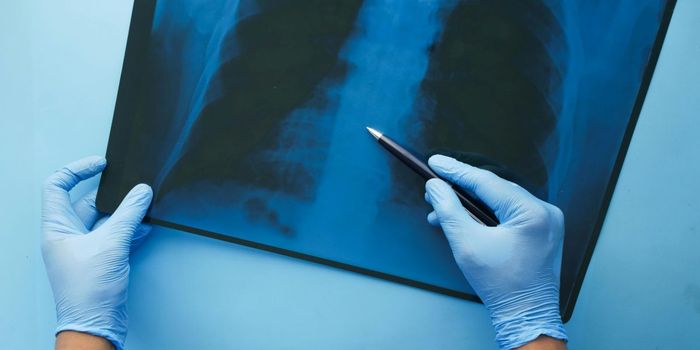Researchers have uncovered a new mechanism of bone erosion—and a possible biomarker—for rheumatoid arthritis.
The group is the first to demonstrate that immune cells, called B cells, contribute directly to the breakdown of bone in RA by producing a signaling molecule called RANKL.
Jennifer Anolik, professor of medicine at the University of Rochester Medical Center and author of the study, found that B cells extracted from RA patient blood produced more RANKL and led to production of more bone-chewing cells, called osteoclasts, than B cells from the blood of healthy volunteers.
This effect was even greater when study authors inspected B cells extracted from RA patients’ joint fluid and tissue.
“The novel finding is that B cells contribute to bone erosion in RA by producing RANKL,” says Anolik. “The other striking thing is that RA patient B cells produce more RANKL—especially in the joint itself.”
The fact that Anolik and her collaborators were able to demonstrate their results in RA joint tissue gives their study an added level of disease relevance. A lot of studies investigating human diseases look at blood samples rather than target tissues, because blood is much easier to collect. Thanks to a unique collaboration between the rheumatologists and orthopedic surgeons in the Center for Musculoskeletal Research, Anolik and her team were able to do studies in joint tissue collected during RA patient surgeries.
According to the latest data from the Centers for Disease Control and Prevention, RA affects approximately 1.5 million adults in the United States. These patients’ immune systems attack their own joint tissue causing painful stiffness and swelling of the joints as well as erosion of the bones in the joint that can cause permanent damage. These symptoms often leave patients unable to perform normal activities of daily life, like dressing themselves.
Because B cells are essential for the immune system attack of joint tissue in RA, therapies that target B cells have recently been used to combat the disease. However, nearly half of patients that receive B cell depletion therapy do not get better and even if they appear to get better, bone erosion can continue undetected.
Anolik and her colleagues believe this is because not all B cells are doing the same thing in RA. According to their study, which appears in the journal
Arthritis and Rheumatology, B cells from RA patient joint samples express RANKL spontaneously, whereas B cells from their blood require stimulation with inflammatory factors in order to produce RANKL. This suggests that there are several different populations of B cells in RA, which differ in their ability to express RANKL and facilitate bone erosion.
Nida Meednu, research assistant professor of medicine and first author of the study, believes that targeting specific populations of B cells may be a new and better way to treat RA patients.
“We know that there are good B cells and you don’t want to eliminate those,” says Meednu. “But, there are some B cells that are more pathogenic. So, you might want to target subsets of B cells, not all of them at once.”
Anolik and Meednu believe RANKL could be used as a marker to decide which RA patients are most likely to have progressive joint damage and which drugs are most likely to halt that progression. “Patients with high RANKL on B cells—especially in the joint—may be most responsive to different types of B cell targeted therapies,” says Anolik. But she cautions, “Longitudinal studies looking at [joint] tissue are necessary to define that further.”
Source:
University of Rochester
This article was originally published on
futurity.org.









